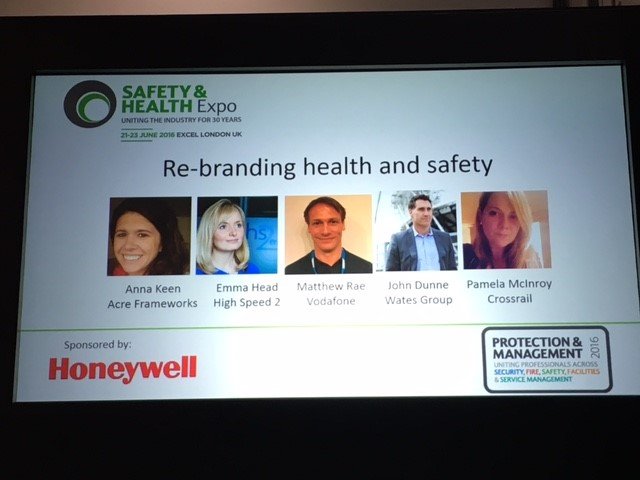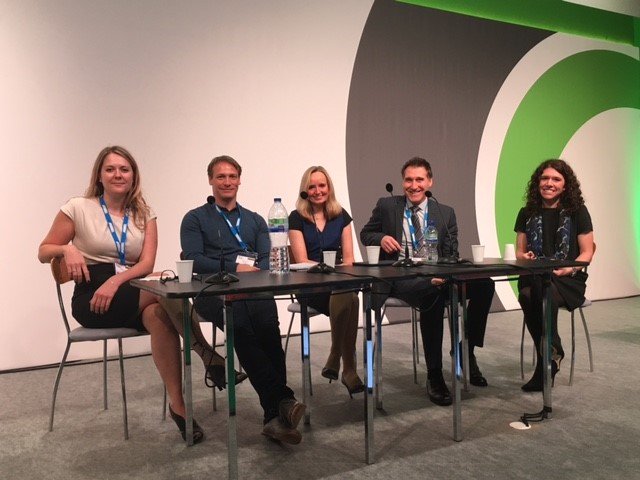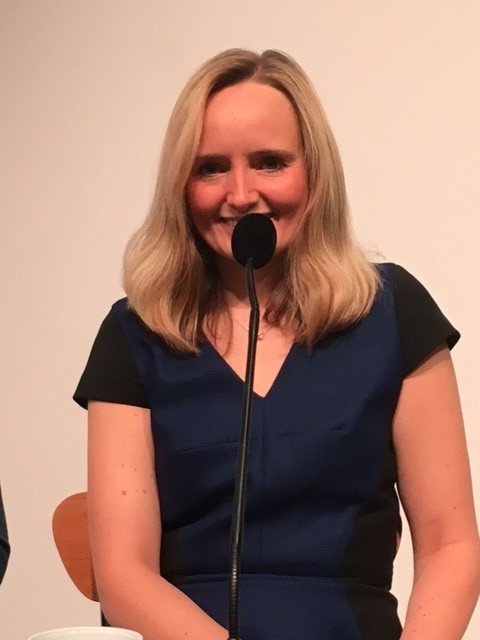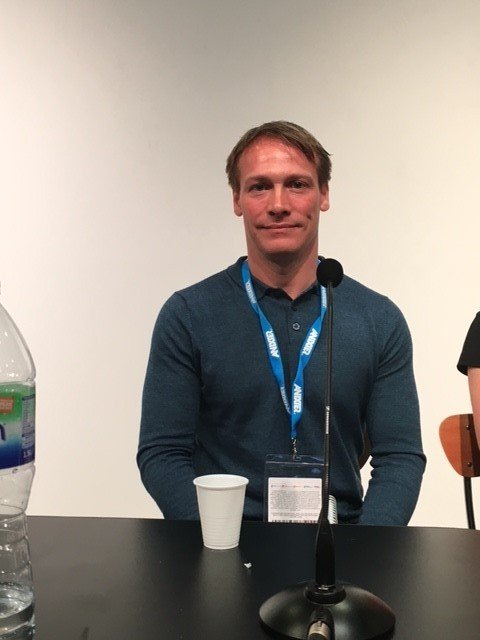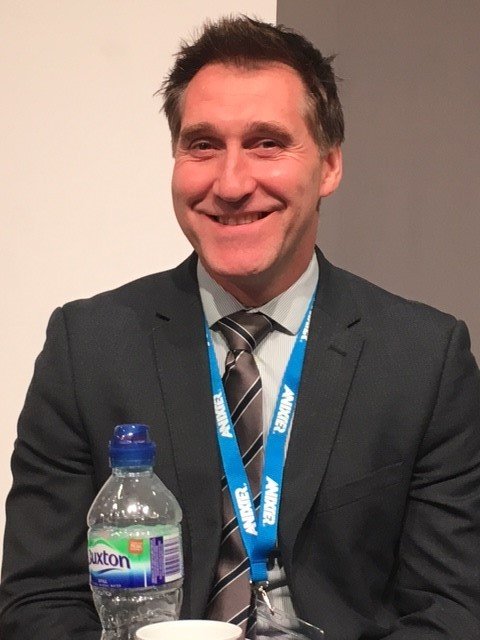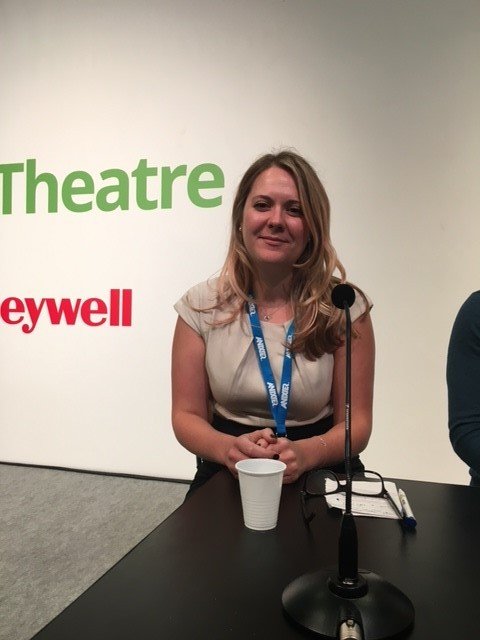Ask the experts: Re-branding H&S

Anna Keen, Acre Frameworks, started the morning’s panel debate by showing a video of what the British public think about health and safety. Anna went onto the streets of London and asked the public their perception of the health and safety profession.
The video showed the general public listing many negative words and phrases, such as boring, straight-laced, burden, obsessed with details, nuisance, administrative, excessive regulation, nanny state, no valid reason, and micro management.
Chairing the panel Anna asked: “Is it fair? Are we ready for a re-brand and if so, how do we do it?”


Emma head, High Speed 2
“Watching the video makes me sad. It’s a great career, but we need to attract the talent of the future. However there’s part of me that knows some of it is true.
“I am currently recruiting, but 50% of people interviewed did make me feel like that . We need to see it, recognise it and respond to it”.
Speaking of how we actually go about re-branding, Emma said: “We need to look at what safety does. Safety is caring, not just compliance or a legal requirement. We need to change our language and change our focus. I say ‘bake it in, don’t bolt it on’. We need health and safety to be at the heart.”
Emma continued: “The legacy that we leave will change this industry. We have to think, what do we want to be remembered for? What will be our legacy?
Talking about changing the narrative around safety, Emma said: “I give less direction and more coaching. I ask people ‘What’s your impact? What was your intent? How do you think you can change that perception? What’s your long term goal?’ People need to be up-skilled on talking and listening.”
We have to think, what do we want to be remembered for? What will be our legacy?

Mathew Rae, Vodafone
“Seeing the video does make me angry, but we need to think about why we get such negative press. I think insurance and other industries don’t help, and often blame us.
“I am privileged to work in developing markets and health and safety is accepted differently there. It’s taken home and delivered into people’s families. I feel like here, we are missing an emotional connection. We need to work on a moral basis, not just financial and legal. It’s time to change.”
Mathew added: “Health and safety needs to be perceived as a core value, not on the list, or top of the list, but core. It never goes away. We must focus on what we can do for our people, contractors, and their families. Work safe, Home safe encourages workers to take their safety messages home. It’s very simple principles which are very effective.”
In developing markets health and safety is taken home and delivered into people’s families.

John Dunne, Wates Group
“Watching the video I picked out a few words: interfering, boring, argumentative, no value and over the top. If that’s what people think, then we need to deal with it. It’s about demonstrating the value we add. It’s not about interfering, it’s about letting people get on with what they are doing – in a sensible way.”
John added: “Health and safety is anything but boring, we need to show people how exciting it is. We need to deal with the perceptions.”
Talking about his own team, John said: “Within our team, there are about 40 HSE professionals, and what I am asking them to do is realise how integral their role is. I tell them to not see it as an add on. I let them know their role is critical, and they need to step up and show that they are a key member of the team. What we are trying to do is move away from the traditional health and safety programme, and teach them about respect, inclusion and learning about how to treat people – not just about health and safety.
“It’s not just about systems and controls. It’s about softer skills and presenting it. It’s about talking to commercial managers.”

Pamela Mclnroy, Crossrail
Pamela began: “I am new to health and safety. If I had seen this video, I would have run the other way.”
As a diversity leader, Pamela explained what that means and how her role fits into health and safety: “Working in diversity my role involves the wellbeing of all workers and their individual risks. Because we are an infrastructure project the process is from HR down to the site. The key thing is that different workers have different risks and more respectful teams are safer.
“Diversity is not just about men and women, it’s about the gay community, trans workers and people with disabilities.
“We have to consider what a construction site looks like for example, for a black lesbian, because when you don’t live that life every day, you can’t always understand the risks.”
“Becoming more diverse is a lot about access and privilege.” Pamela continued “It’s expensive to go to university and it can be hard for some people to change jobs. Quotas are important but they scare people, it’s not about positive discrimination and it’s not about equality it’s about equity.”
“The key thing is that different workers have different risks and more respectful teams are safer.”
Ask the experts: Re-branding H&S
Anna Keen, Acre Frameworks, started the morning’s panel debate by showing a video of what the British public think about
Lauren Applebey
SHP - Health and Safety News, Legislation, PPE, CPD and Resources Related Topics
Webinar: Risk Management Redefined: How To Drive Continuous Improvement
Webinar: Enhance Health and Safety in Your Supply Chain by Empowering your Contractors
Webinar: Defensive Driving: Reducing the risk of collisions

